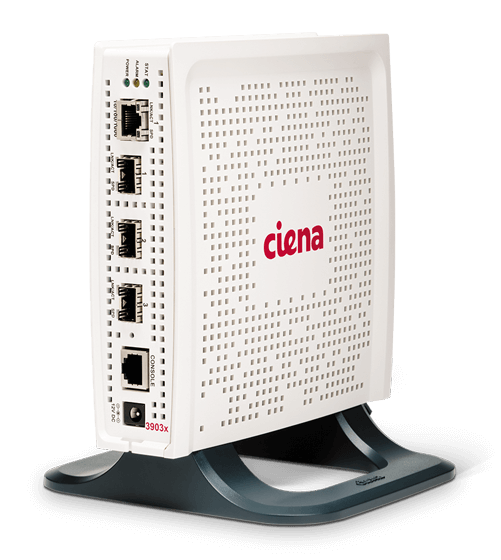
Ciena’s 3926 Platform is a compact, smart CPE that delivers 10 Gb/s service delivery of IP and Ethernet with ultimate flexibility for modular, add-on network functions of business or mobile backhaul services.
The 3926 can address today’s most challenging network scenarios, providing flexibility and future-ready attributes that de-risk business decisions while allowing for fast time to market. With the use of optional field-replaceable modules, operators can limit the endless upgrade cycles that only add cost and inefficiency to the network infrastructure. Network Functions Virtualization (NFV) enables agility and scalability to facilitate transformation of networks by hosting multiple VNFs at the customer premises or network edge.
Cost-effectiveness and service velocity have become critical competitive advantages for network operators. In many cases, service velocity is the determining factor in winning new service sales. The 3926 implements Ciena’s unique ZTP capabilities, allowing network operators to rapidly deploy new services in a fully automated manner. By reducing or eliminating costly and time-consuming manual intervention, provisioning errors are eliminated via ZTP. Most importantly, ZTP improves service deployment velocity and significant competitive advantage.

Offers 82 Gb/s of non-blocking switching capacity in a compact service demarcation device, running Ciena’s SAOS for advanced OAM and QoS functions

Low footprint 1RU in a nonblocking architecture with: - 6 x 1GbE/10GbE SFP+ ports - 2 x 100M/1GbE ports

Allows a field replaceable module for distributed VNF hosting on an Intel x86 server module or for TDM service supporting: -16 x DS1/E1 - 6 x DS1/E1 + 4 x DS3/E3 + 4 x OC3/12 / STM1/4 or 1 x OC48/STM16

Leverages Ciena’s MCP multi-layer support for end-to-end network management control and planning

Allows for orchestration via Ciena’s Blue Planet® MDSO or third party; a truly open platform for integration of best-in-breed software functions

Zero-Touch Provisioning (ZTP) for rapid, secure, and error-free turn-up of services
Interface
Ethernet
MEF CE 3.0 Compliant
| Carrier Ethernet OAM
Synchronization
|
Networking Protocols
|
Network Management
|
Interfaces
Ethernet
| MEF 3.0 Certified
Carrier Ethernet OAM
Synchronization
|
Networking Protocols
|
Network Management
|
Interfaces
Agency Approvals
Service Security
Physical Characteristics
Standards Compliance
|
 The Adaptive Network
The Adaptive Network



